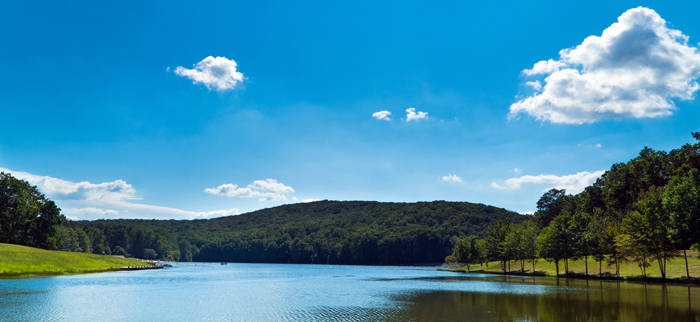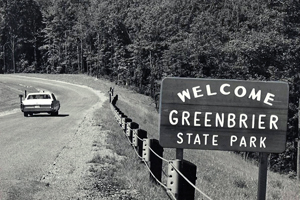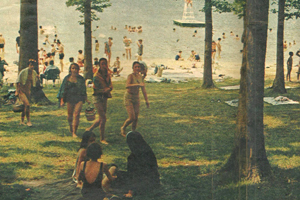Celebrating 50 Years: Greenbrier State Park

Greenbrier Lake; by Scott Cantner
It’s hard to imagine a time when there were no state parks. Most of Maryland’s were created between 1945-1975, though even by 1960 there still weren’t very many. Under the direction of Gov. J. Millard Tawes, the state began acquiring property and creating several new sites.

Entrance in 1967; archives
Back in the 1760s, the land on South Mountain was primarily owned by the Hughes Brothers, who ran the Mount Aetna Iron Furnace. This company used the forests as fuel for their fires. By 1850, the business had closed, and they started selling their land.
After the Civil War, the area that would later become Greenbrier State Park was actually a patchwork of wood lots—small parcels of land owned by nearby residents for firewood or lumber. Some of the parcels were turned into small farms.
In the 1950s and early 1960s, the state began acquiring these parcels and consolidating them into what is now one of the most visited water-related parks in Maryland.
Greenbrier welcomed its first guests in the summer of 1966 in order to test its popularity, but did not officially open until 1967. The park offered a man-made 42-acre, stream-fed lake with 1,000 feet of sandy beach, picnic tables and grills. There were no bath- rooms or showers; only port-a-pots.
That first summer saw so many visitors that future plans for the park had to be changed. Planners essentially had to double everything they had originally designed. The $1.1 million originally allocated increased by another $1.4 million to construct enough facilities to handle the crowds.

Picnicing in 1967; archives
By the summer of 1967, when the park was officially opened, what we now refer to as the main road into the park was constructed, and the welcome booth and camp office were built. In 1968, bathhouses were in place.
One year later, 165 campsites had been created, the maintenance shop had been built and 140 more parking spaces had been added. By the early 1970s, water and sewage treatment plants had been built, and the visitor center was constructed soon thereafter.
By 1975, the park looked pretty much as it does today, with classic, park-style architecture and stone buildings.
Greenbrier started out as a very popular park, and it continues that tradition to this very day.
| Greenbrier continues to serve a very high volume of visitors during summer weekends and holidays. To ensure the safety of our guests and the protection of the park’s natural resources and facilities, the park has a limited capacity and closes as needed. Please follow @GreenbrierSP on Twitter for real-time updates. |
Article by Mary Jo Bartles—lead ranger at Greenbrier State Park.
Appears in Vol. 20, No. 3 of the Maryland Natural Resource magazine, summer 2017.


 1-888-373-7888
1-888-373-7888 233733
233733